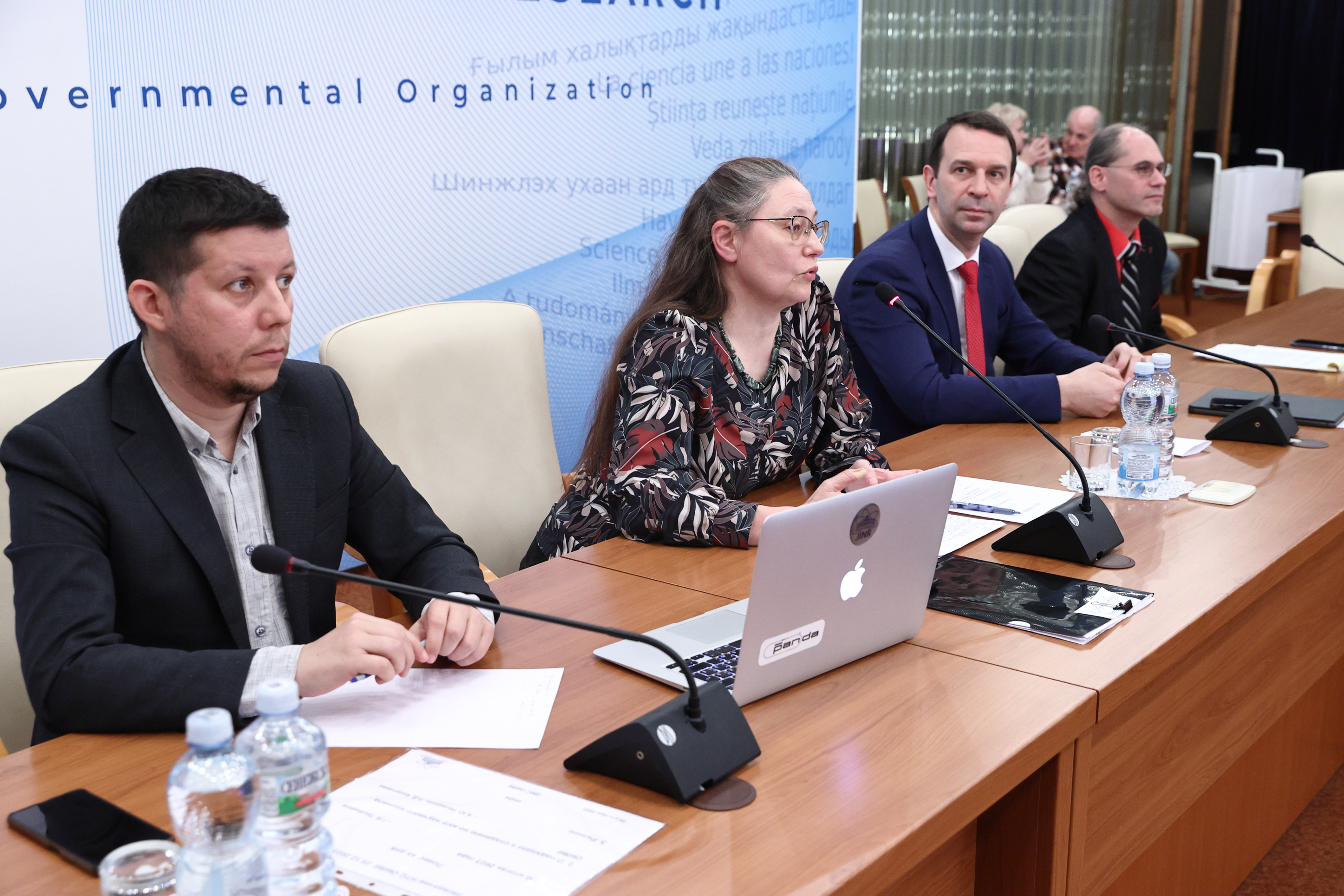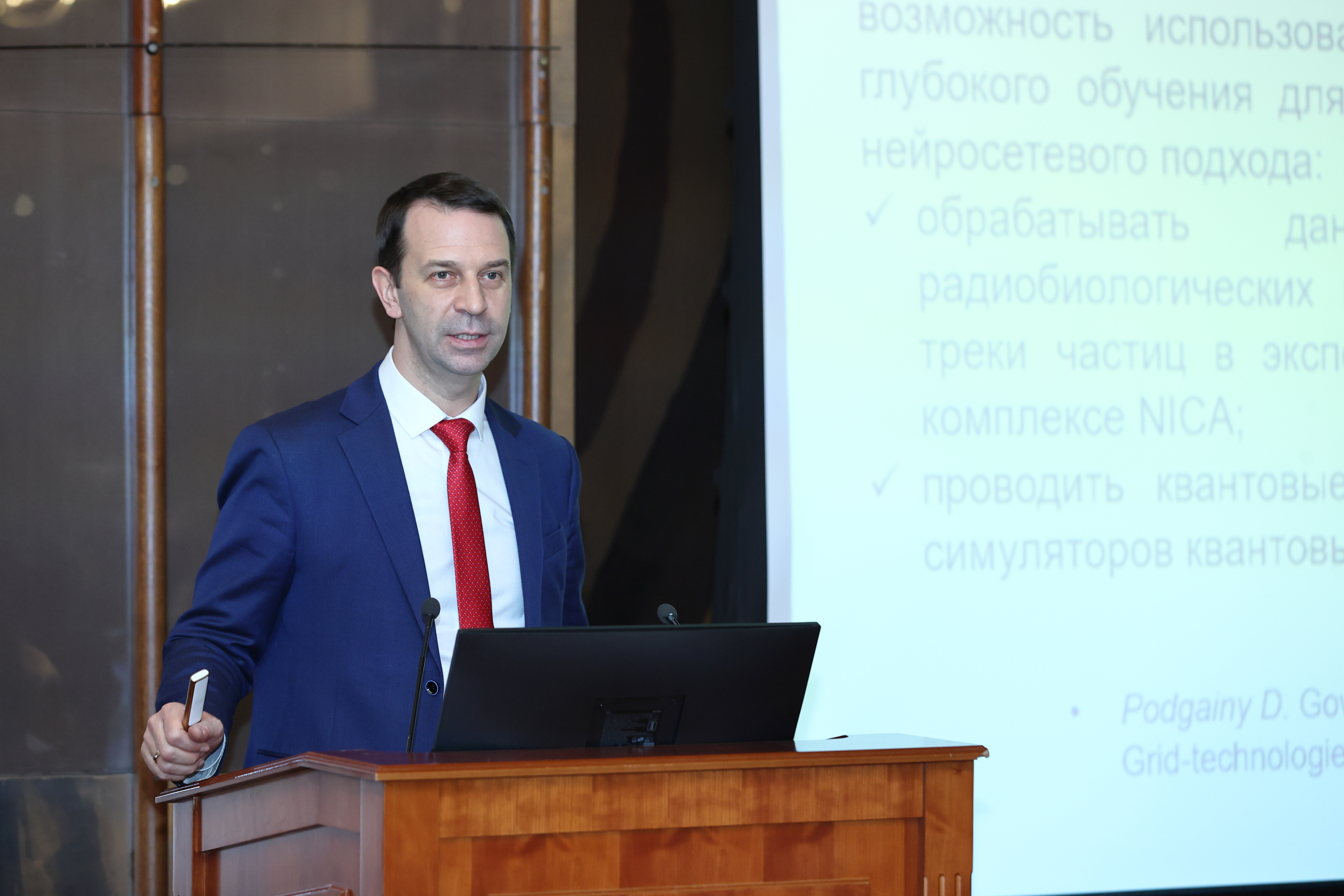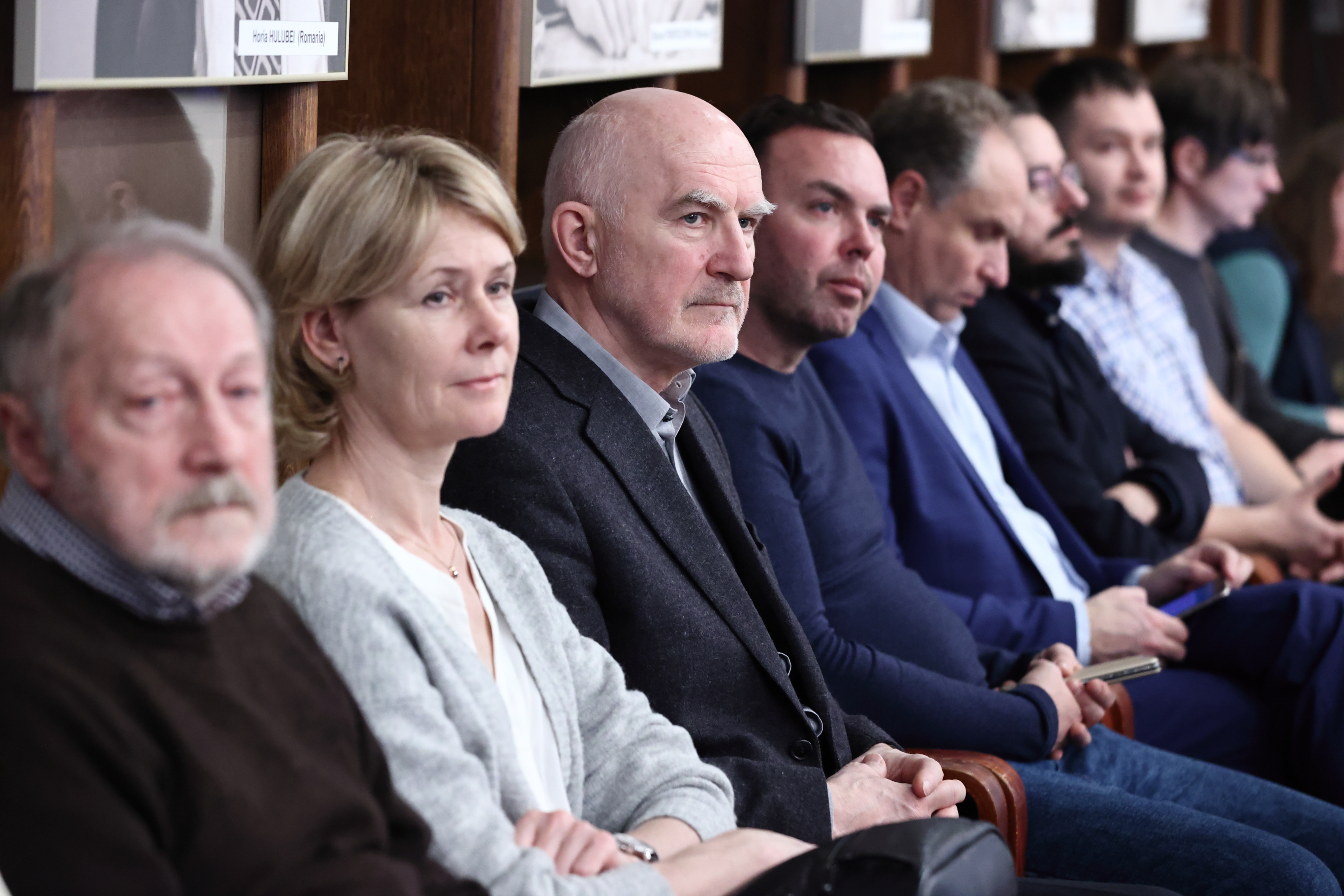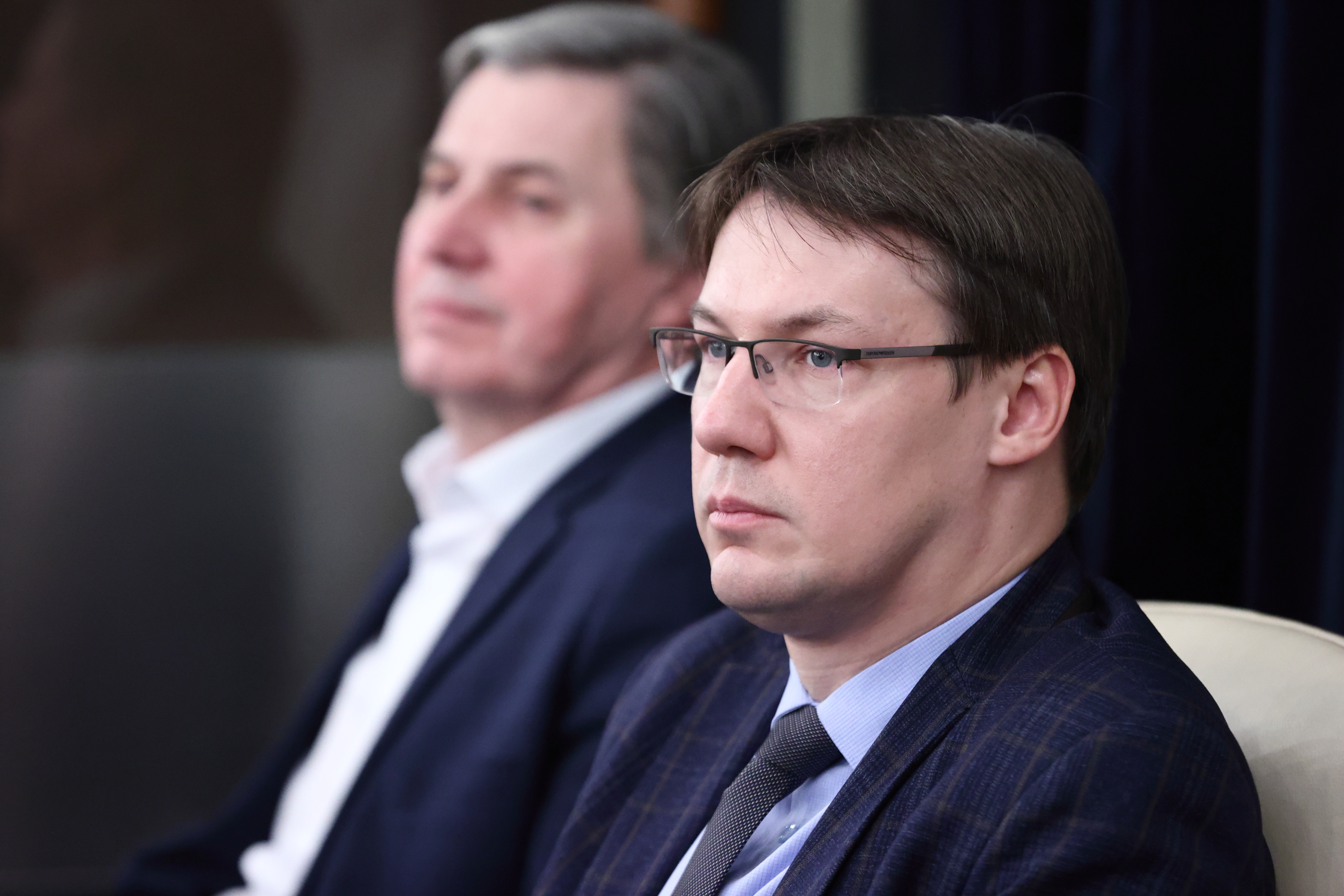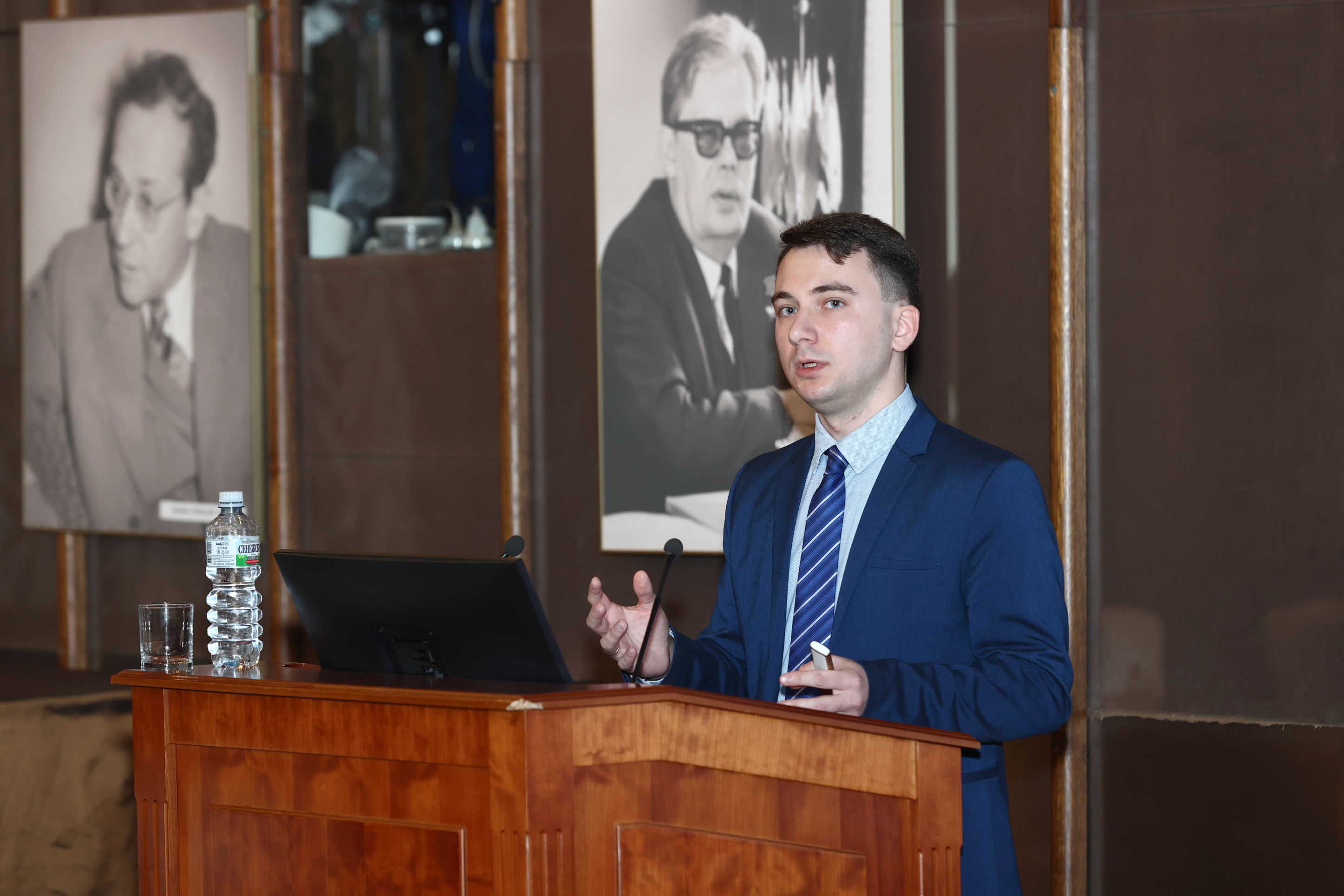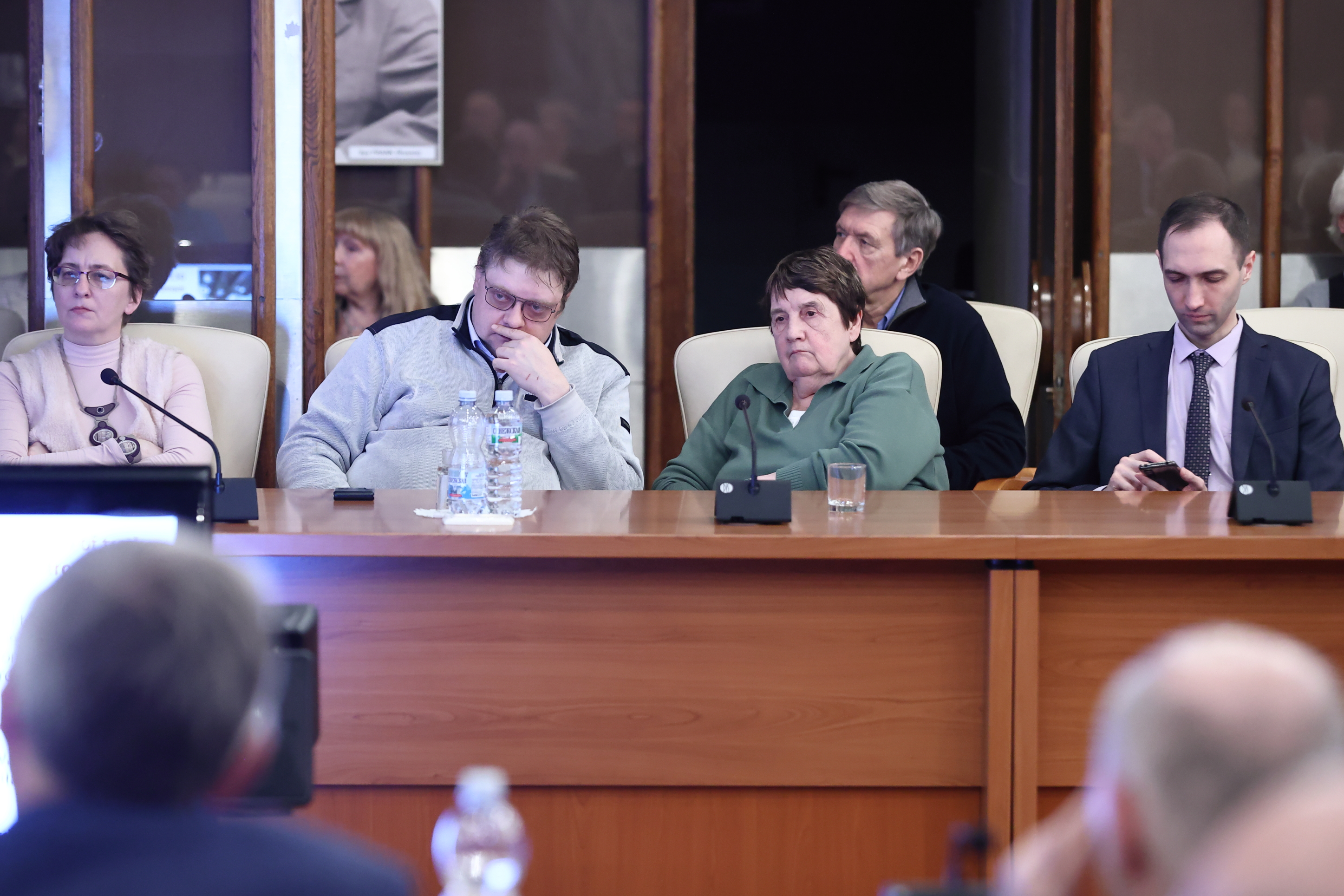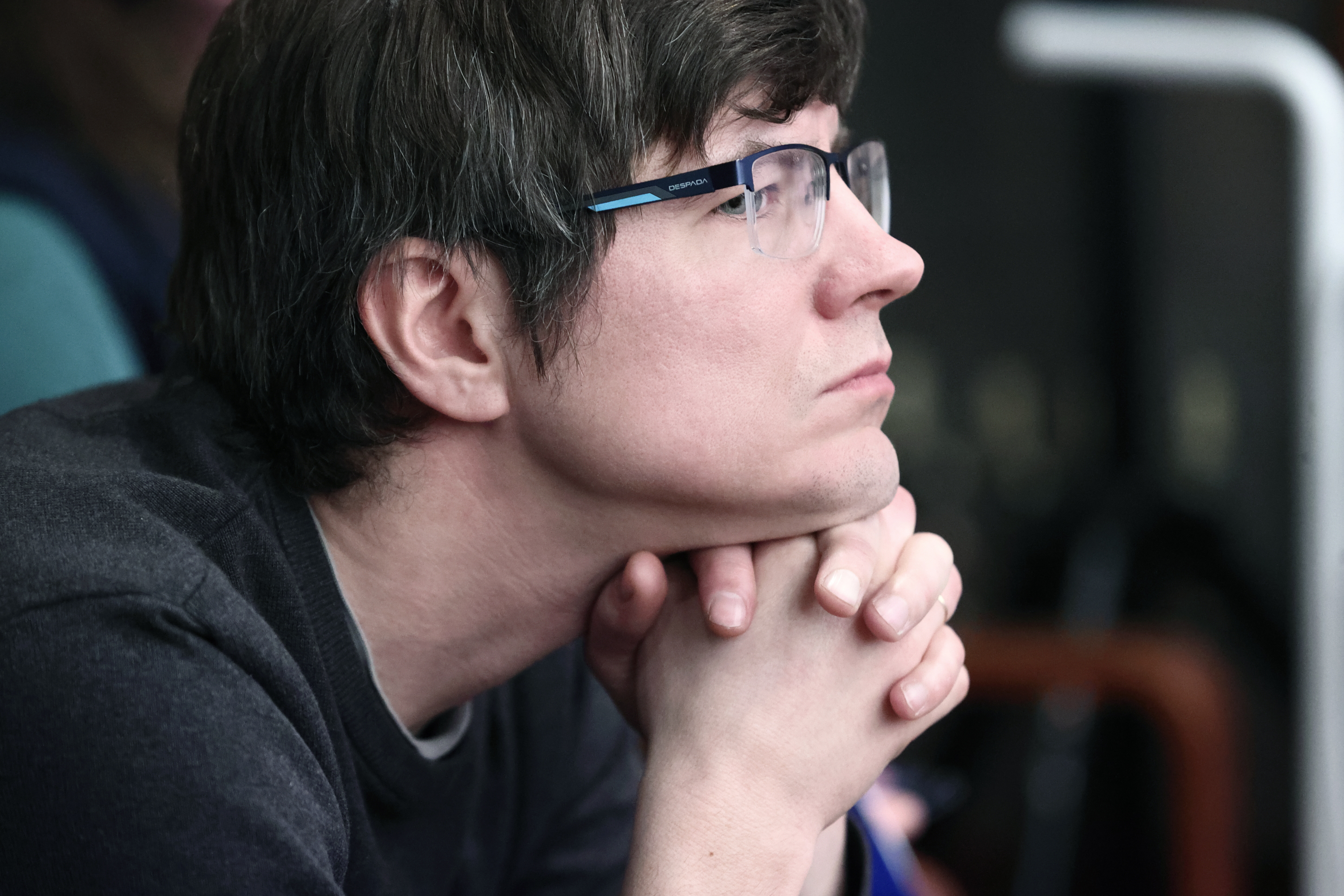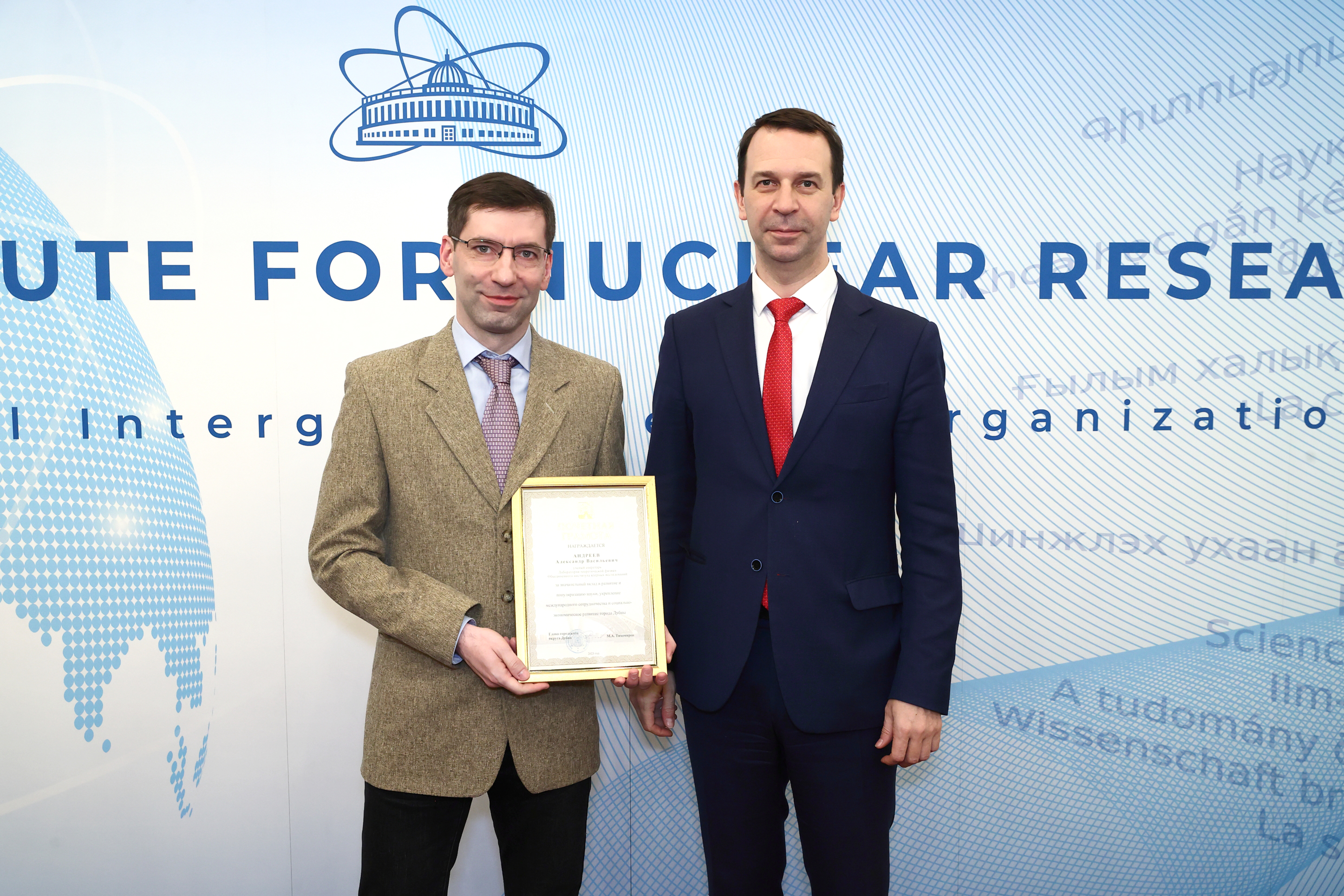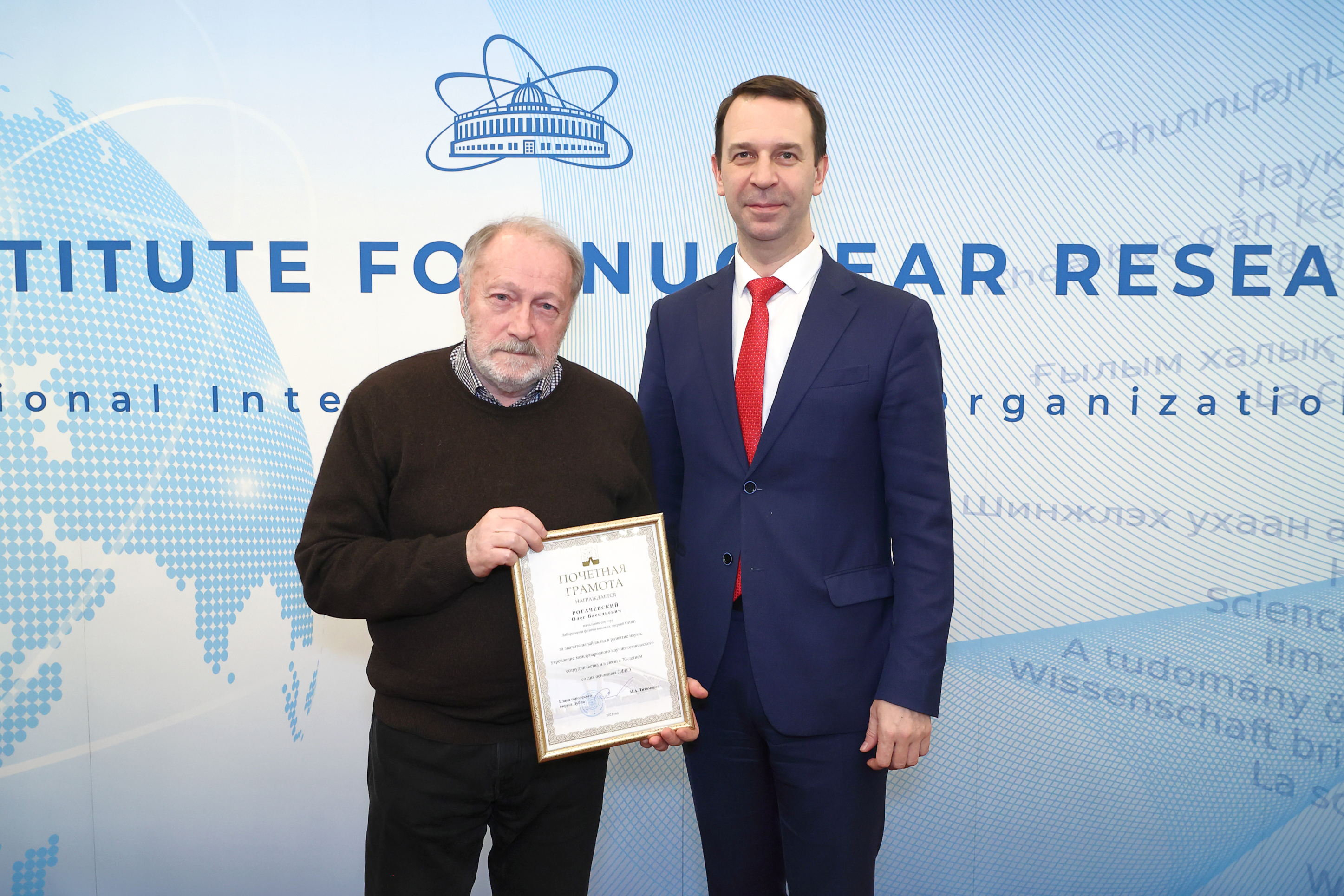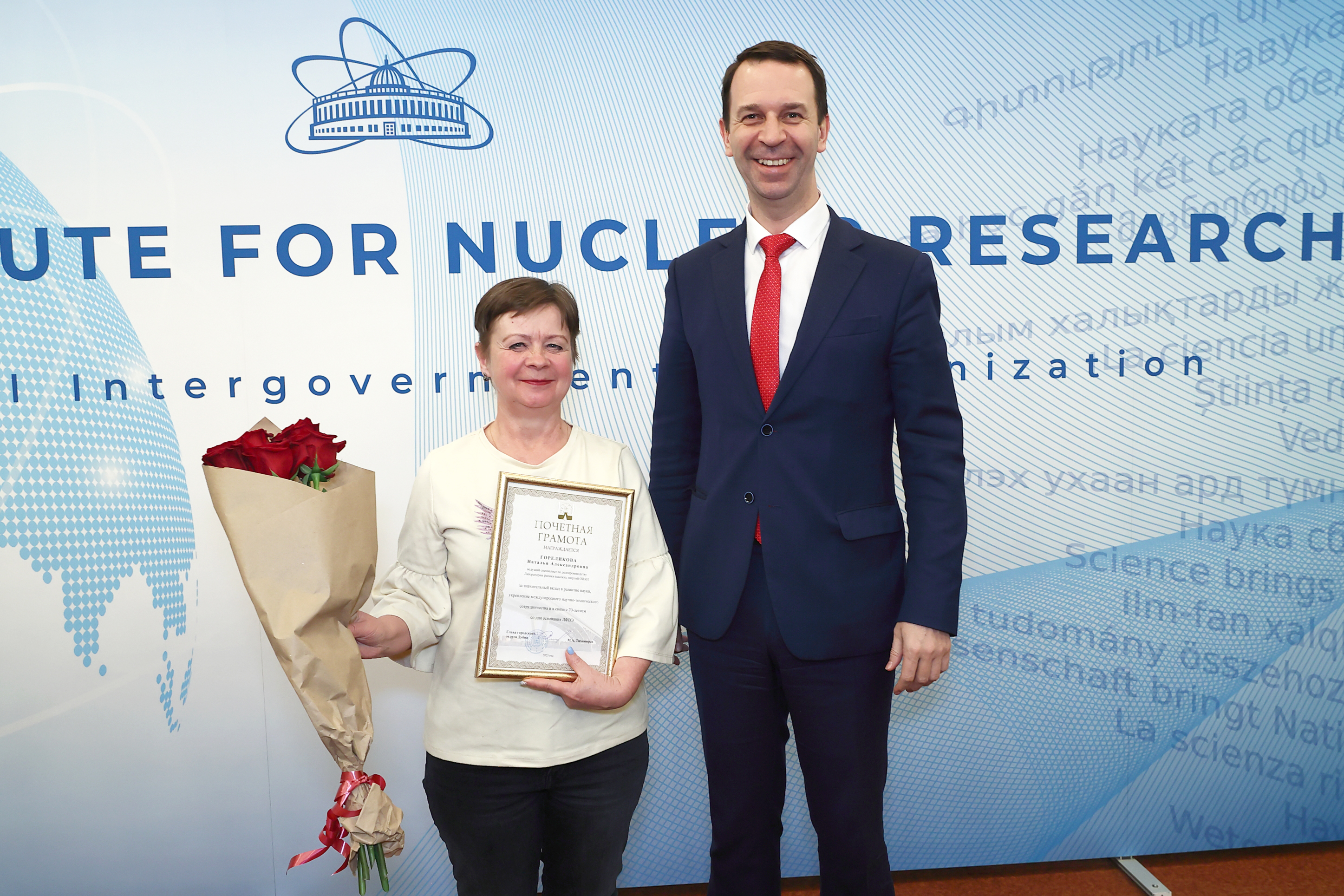JINR STC: results of year and new scientific journal
News, 28 December 2023
On 25 December, the JINR International Conference Centre hosted the meeting of the JINR Science and Technology Council. The participants presented the results achieved during the year and plans for the near future, and discussed the creation of an Institute’s online peer-reviewed scientific journal. Several JINR employees received municipal awards.
STC Chairman Elena Kolganova opened the meeting. The presentation of JINR Director Grigory Trubnikov covered the key results of the year: scientific, social and administrative.
At the laboratories of the Institute
Grigory Trubnikov reviewed the latest achievements of the JINR laboratories. This year, studies performed at BLTP are presented in more than 300 journal articles, two monographs, and more than 100 conference proceedings. A number of key scientific results were published in the most authoritative world journals. The laboratory hosted two educational programmes for young scientists, six international conferences, and three workshops with researchers from South Korea, China, and the Republic of South Africa.
This March marked the end of a record-breaking session at the NICA Accelerator Complex, the main result of which was more than half a billion events at the BM@N facility on a 3.8 GeV Xe beam and CsI target. Stable operation of the complex within four months was achieved. The collider injection complex, which includes a cryogenic source and heavy-ion linear accelerator, the Booster and Nuclotron synchrotrons as well as a system of beam transport channels, was put into operation.
The effective volume of the Baikal-GVD Deep Underwater Neutrino Telescope, the largest DLNP JINR basic facility, has reached nearly 0.6 km3 this year.
At the FLNR Superheavy Element Factory, researchers conducted experiments on the synthesis of darmstadtium isotopes in 48Ca+232Th and 40Ar+238U fusion reactions as well as 116Lv isotopes in 54Cr+238U reaction. Five new superheavy nuclides have been discovered: 288Lv, 275,276Ds, 272Hs and 268Sg. Modernisation of DRIBs-III Accelerator Complex is nearing completion. Gradual launch of the U400M Cyclotron is to start at the end of March. Commissioning of the DC-140 Accelerator is scheduled for the first half of the year. The construction of the experimental hall of the U-400R Accelerator Complex has entered a new phase – the workers are currently pouring the foundation. As noted by Grigory Trubnikov, the construction of the building is ahead of schedule.
The key achievement for MLIT was the reliable operation of networks and the whole Multifunctional Information and Computing Complex. After the modernisation, the Govorun Supercomputer has significantly increased its computing capabilities and peak performance. Its data storage expanded to as much as 125 Pb, which is larger than the repositories of Yandex, Mail.ru, and Sber Supercomputers.
Among numerous applied studies performed at FLNP, Grigory Trubnikov highlighted environmental research of the Nile sediments. Plenipotentiary of the Government of the Republic of Egypt to JINR expressed gratitude to the Institute for prompt response to this important task.
LRB Radiobiologists have developed a fundamentally new method of increasing the biological efficiency of medical proton beams using the AraC drug. Administration of Ara-C has proven to enhance the antitumor effect of proton radiation through several mechanisms, including decreasing the number of tumor stem cells, inhibiting cell proliferation, and instigating angiogenesis in the tumor while altering the immune response in the primary site and its infiltration by lymphocytes. Researchers studied how chromosomal abnormalities form in human carcinoma cells and normal human blood lymphocytes after irradiation with photons and protons. Tumor cells displayed greater ability to repair chromatin breaks under gamma irradiation compared to normal cells, as opposed to proton irradiation. These results suggest that proton beams are preferable in radiation therapy for breast carcinoma patients.
In addition, the Higher Attestation Commission of the Ministry of Education and Science of Russia summed up the results of the work of the JINR Dissertation Councils in 2019-2023. Their activity was recognised as successful. Since 2019, 92 Dissertation Councils have took place, with more than 70 PhD and about 20 doctoral theses defended. In 2023, 29 PhD theses were defended.
Staff
Grigory Trubnikov emphasised that personnel is the most crucial element of scientific work for the Institute. As of 25 December 2023, the total number of employees at JINR was 5128; with the average age of 51 years. Along the course of the year, instances of internal dual employment decreased, and the number of research interns increased. In 2023, the Institute’s employees received 29 grants of the Russian Science Foundation and won several prestigious awards.
Next year, JINR plans to ensure the necessary increase in the number of qualified personnel.
Social infrastructure
Positive changes are taking place in the Institute’s social infrastructure. The Dubna substation, which supplies power for NICA, started operating at VBLHEP site. The capacity of the second VBLHEP substation, Sister, will increase as well once its reconstruction finishes at the end of 2024.
At DLNP, a comfortable modern pedestrian checkpoint has been launched. The car checkpoint will be built by May. Next year, a parking lot will be installed in front of VBLHEP JINR, and renovation will begin at the Ratmino dispensary.
JINR Director highlighted the Institute’s extensive efforts in social policy. The social assistance includes loans for employees, improvement of housing conditions, and funds for medical service. In particular, in late May, a vital event for the Dubna city took place: a vascular centre was established at Medical Unit No.9, and more than 400 operations have been carried out so far. The Institute actively supports the development of the Medical Unit: including the recruitment of specialty care physicians and establishment of a hemodialysis department, a medical rehabilitation centre, a smart ward, and other facilities.
Education
JINR supervises several educational institutions of the city, including the regional Physics and Mathematics Lyceum named after Academician V. G. Kadyshevsky. Among 26 of this year’s lyceum graduates, 14 have enrolled in a number of the top 10 Russian universities. Apart from that, JINR is collaborating with Lyceum No.6 named after Academician G. N. Flerov, where Yandex.Lyceum branch opened.
In May, Dubna branch of the Moscow State University received an educational license. In November, a meeting of JINR-MSU Scientific Council took place. The parties signed an agreement to establish a new department, radiochemistry and radiobiology.
The JINR University Centre introduced a set of school textbooks for advanced study of physics in grades 7-9; textbooks for high school students are in the works. The set includes not only textbooks, but also workbooks, exercise books for practical studies, online workshops, and methodological support. It was published by Prosveshcheniye Publishers in 2023 and approved by the commission of the Ministry of Education of the Russian Federation.
International scientific cooperation
Grigory Trubnikov highlighted it was thanks to the hard work of many that international collaboration saw outstanding progress this year.
In March, the Chinese Academy of Sciences, JINR, and the ministries of China and the Russian Federation signed the Protocol on Strengthening Cooperation in the Field of Basic Scientific Research. The sides established a Joint Coordination Committee. During its first meeting in September, 18 projects were selected for implementation. The next meeting will take place in May.
National Council for Science and Technology of Mexico signed an agreement with JINR. Two meetings of the Coordination Committee took place, and four joint projects are set for implementation.
JINR is developing cooperation with India, Pakistan, and the Arab Atomic Energy Agency (AAEA). In its headquarters, in Tunisia, the JINR Information Centre has been established. Through AAEA, Qatar, Oman, and Saudi Arabia have expressed interest in the JINR activities. Partnerships with several Brazilian institutions and ministries are underway – a number of joint scientific projects are set to be developed next year.
The Institute is actively cooperating with Armenia, Vietnam, Egypt, Kazakhstan, Cuba, Serbia, and the Republic of South Africa.
Tasks and plans
The Committee of Plenipotentiaries of the Governments of the JINR Member States approved the new Seven-year Plan for the Development of JINR for 2024-2030 during the session in Almaty.
“I would like to express my sincere gratitude to all the staff of the Institute and colleagues from the Member States. The year has been very challenging, but our faith in the organization’s resilience and competence persevered. 2024 will be even more challenging, with heavier workload. And yet we have everything to make our projects a reality – all the resources, intelligence, and our wonderful ambitious plan,” Grigory Trubnikov concluded.
Peer-reviewed open access journal
Moving on to the second issue on the agenda, FLNP JINR Researcher Alexander Nezvanov presented a report “On approaches to creating a new JINR scientific journal”. The authors are Alexander Nezvanov and Liudmila Kolupaeva.
Vladimir Kekelidze, Sergei Shmatov, Dmitry Peshekhonov, Dmitry Kazakov, Igor Meshkov, Viktor Aksenov, Oleg Teryaev, Tatiana Strizh, Alexander Bednyakov, Alexey Aparin, and Alexey Novoselov discussed what makes the creation of the new journal necessary.
Municipal awards
At the end of the STC meeting, awards were presented to the Institute’s employees.
Certificates of honour of the Head of Dubna city district was given to:
- FLNP Director Egor Lychagin,
- VBLHEP Scientific Secretary Alexander Cheplakov,
- BLTP Scientific Secretary Alexander Andreev,
- Advisor to the JINR Directorate Gil Pontecorvo,
- VBLHEP Head of the Sector of Ion Collision Reconstruction Oleg Rogachevsky,
- VBLHEP Leading Specialist in Office Management Natalia Gorelikova,
- VBLHEP Leading Electronics Engineer Alexander Kirichenko.
A note of acknowledgement of the City Council of Deputies was presented to:
- Head of group of heat and water supply and ventilation of VBLHEP Vladimir Chernyaev.

